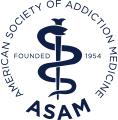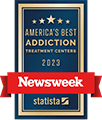Understanding Inhalant Addiction
Learn About Inhalant Abuse & Addiction
Inhalants are a group of common substances that are abused through breathing in fumes or vapors produced by these substances to achieve a mind-altering high, which can include lightheadedness, impaired coordination, lowered inhibitions, dizziness, and more. There are hundreds of substances, including those listed below, that are categorized as inhalants:
- Volatile solvents: This category of inhalants includes liquids that vaporize when they get to room temperature. Some examples of these inhalants are cleaning fluids, adhesives, lacquer, and paint thinner.
- Aerosols: These inhalants include spray paint, hairspray, and other aerosols containing solvents and propellants.
- Nitrites: Amyl and butyl, the most popular nitrites, are often used to increase sexual experiences.
- Gases: Within this subcategory, the most commonly abused substances include chloroform, propane, butane, and nitrous oxide.
Statistics
Statistics of Inhalant Abuse
Most cases of inhalant abuse are amongst adolescents and teenagers, although adults also participate in this type of substance abuse. The National Survey on Drug Use and Health (NS-DUH) reports that nearly 60,000 adults abuse inhalants each year. Additionally, the Drug Abuse Warning Network (DAWN) has shown that inhalant abuse is responsible for up to 10,000 emergency room visits nationwide.
Causes & Risk Factors
Causes & Risk Factors of Inhalant Abuse
Substance abuse and addiction can be brought on by a number of internal and external factors, and it is often a result of a combination of both. Experts in the field of mental health who have studied the development of addiction have acknowledged numerous genetic and environmental aspects, including:
Genetic: If an individual has a family history of inhalant or other substance abuse problem, his or her chances of struggling with the same issues is increased (especially if one of his or her parents or siblings is affected). Within recent years, scientists have identified numerous genes and gene clusters that can impact an individual’s likelihood for developing a substance use disorder.
Environmental: Individuals with a history of abuse and/or neglect might abuse inhalants because they are readily accessible. When this happens, both the issues surrounding the abuse/neglect and the accessibility to inhalants can impact an individual’s chances of abusing these substances. Other environmental factors can include high levels of stress, living in poverty, and socializing with others who abuse drugs.
Risk Factors:
- Low self-esteem
- Living in poverty
- Prior substance abuse
- Family history of substance abuse, addiction, and/or mental illness
- Personal history of trauma
- Early exposure to substance abuse
- Personal history of abuse and/or neglect
Signs & Symptoms
Signs & Symptoms of Inhalant Abuse
With hundreds of inhalants available, the signs and symptoms that can arise can vary tremendously in duration, appearance, and severity. However, below are some of the most common signs and symptoms that an individual who is abusing inhalants might exhibit:
Behavioral symptoms:
- Having large amounts of glue, aerosols, paint, or other inhalants in one’s possession
- Lying about one’s whereabouts and activities
- Slurred speech
- Swaying and/or stumbling
- Engaging in risky, dangerous behaviors
- Belligerence
Physical symptoms:
- Dizziness
- Nausea
- Irregular heartbeat
- Breathing problems
- Headaches
- Emitting a chemical or gas-like odor
- Watery eyes and runny nose
- Sores near the mouth
- Muscle weakness
Cognitive symptoms:
- Disorientation
- Poor judgment
- Impaired coordination
- Inability to concentrate
- Confusion
Psychosocial symptoms:
- Loss of interest in activities and issues that were previously important
- Excitability and restlessness
- Apathy
- Unprovoked agitation or anger
- Inability to experience pleasure
Effects
Effects of Inhalant Abuse
The damage that can develop from inhalant abuse can vary tremendously based on the type of inhalant that is being abused and how long it has been abused for. Below are some of the most common effects of inhalant abuse:
- Ulcers
- Anemia
- Damage to the brain, kidneys, and liver
- Cardiovascular problems
- Blindness
- Hearing loss
- Muscle atrophy
Co-Occurring Disorders
Inhalant Abuse & Co-Occurring Disorders
Numerous individuals who abuse inhalants are also struggling with additional mental health issues, including one or more of the following co-occurring disorders:
- Persistent depressive disorder
- Attention-deficit/hyperactivity disorder (ADHD)
- Bipolar disorder
- Major depressive disorder
- Oppositional defiant disorder (ODD)
- Anxiety disorders
Effects of Withdrawal & Overdose
Effects of Withdrawal & Overdose From Inhalant
Individuals who have been abusing inhalants for a long period of time and then attempt to stop their use or reduce it can trigger the onset of withdrawal symptoms, such as:
- Powerful headaches
- Tremors and convulsions
- Intense cravings
- Nausea
- Abdominal cramping
- Agitation and irritability
- Excessive sweating
Effects of inhalant overdose: The abuse of inhalants can lead to overdose, which can possibly be deadly. Someone who has abused inhalants and shows the following symptoms should obtain immediate medical attention:
- Irregular heartbeat
- Severe trouble breathing
- Hallucinations
- Bleeding from the nose
- Vomiting
- Unconsciousness







